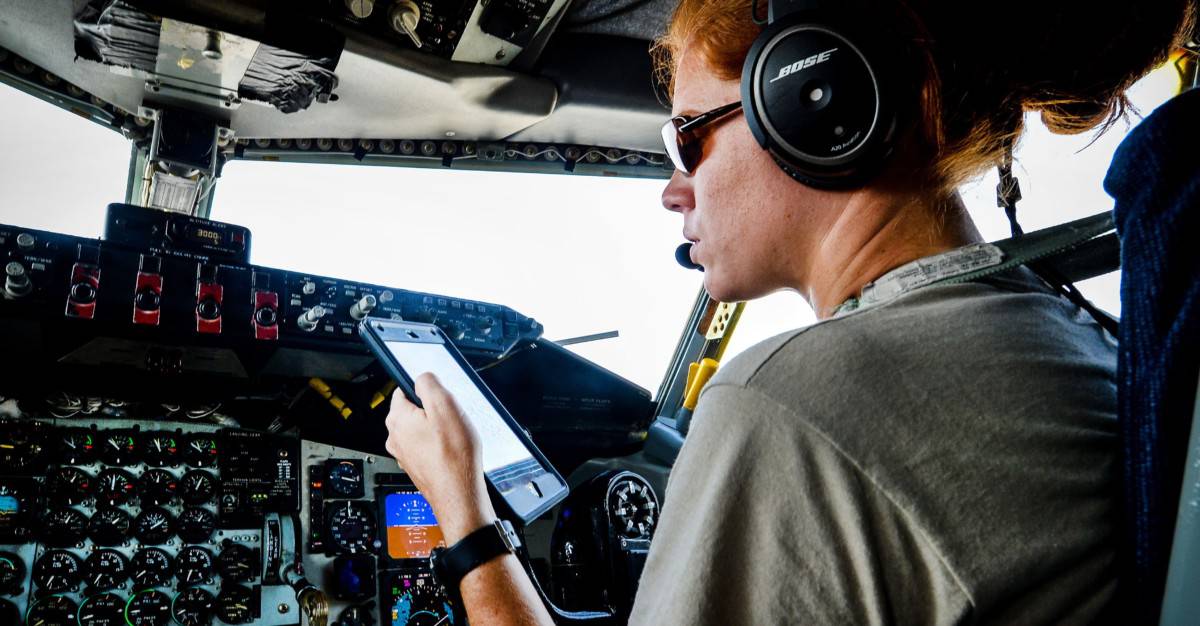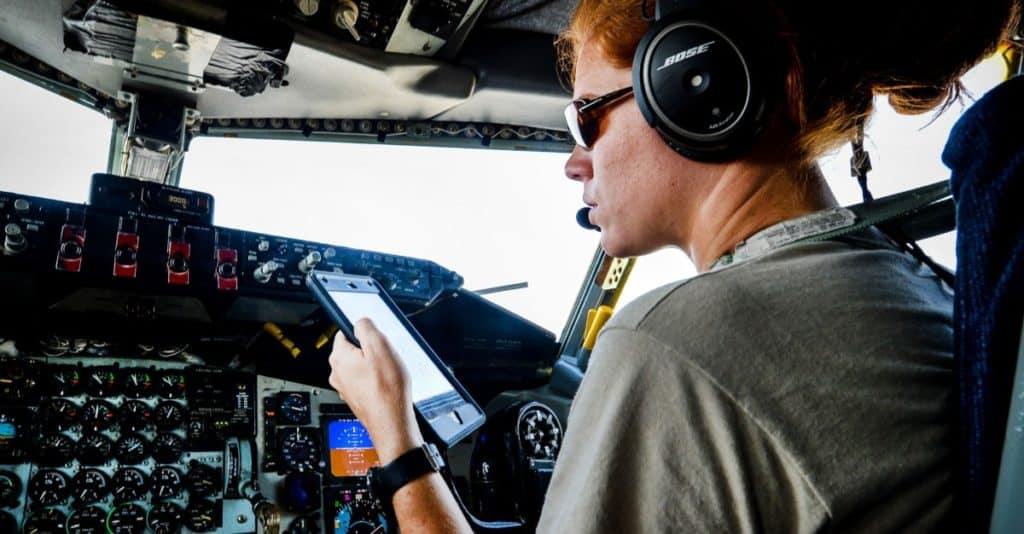
Have you ever glanced into the cockpit when boarding your flight for your trip and seen the pilots sitting there holding a checklist? Why do they use them? Do they not know how to fly that aircraft?
Pilots use aircraft checklists to prevent complacency by following every step to ensure aircraft are correctly configured for every phase of flight. Missed steps & incorrectly remembered steps have contributed to many aircraft accidents. Checklist use is mandatory by most large aircraft companies.
Every large and complex aircraft will utilize checklists, especially in passenger-carrying airline operations. The same is true in most twin-engine helicopter operations where the use of checklists in two pilot crews is usually mandatory.
Let’s look at why many companies mandate the use of aircraft checklists.
Aircraft Checklists. What Is Their Purpose
Aircraft checklists have one purpose:
Aircraft Checklists Prevent Pilot Complacency
Aircraft manufacturers will produce checklists to allow new pilots to the aircraft type and seasoned pilots to correctly configure all the aircraft systems, navigation equipment & radios and for each particular phase of flight.
Each phase of flight usually requires many aircraft systems to be changed to ensure the aircraft not only performs safely but also efficiently. By following a checklist for that particular flight phase there is no ambiguity as to whether the aircraft is set up correctly.
Checklists are a list of items or functions that need to be inspected, set, or performed in a particular order so that nothing is left out. They are easy to use, make configuring the aircraft logical, and prevent systems or steps from being missed or incorrectly set.
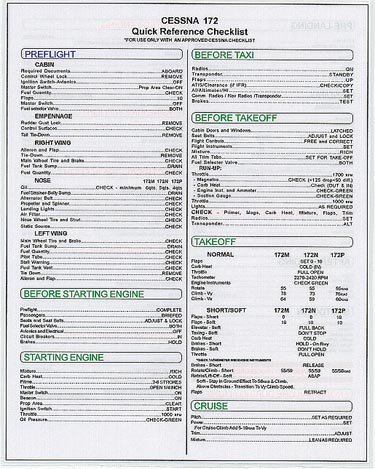
No matter the size of the aircraft, a new pilot needs something to reference to be able to learn the aircraft and safely operate it. Pilots who have been flying that particular aircraft for months and years can have the checklists memorized, but a lapse in concentration or a simple distraction can cause a missed step.
The only thing that changes with checklists is the list size! The aircraft checklist for the A380 will contain considerably more steps than the Cessna 172!
Do All Pilots Use Checklists?
Checklists are available for every aircraft type that is manufactured and every pilot will use them at some point whether it be when they are first training or transitioning onto the aircraft or for every flight throughout their entire career.
Once a pilot has memorized the checklist in simple aircraft, then the use of the checklist will depend on the flying they are doing:
- Private owners of an aircraft will most likely stop using them
- Recreational fliers will most likely stop
- Small commercial airlines will stop
- Single-engine helicopter pilots will stop
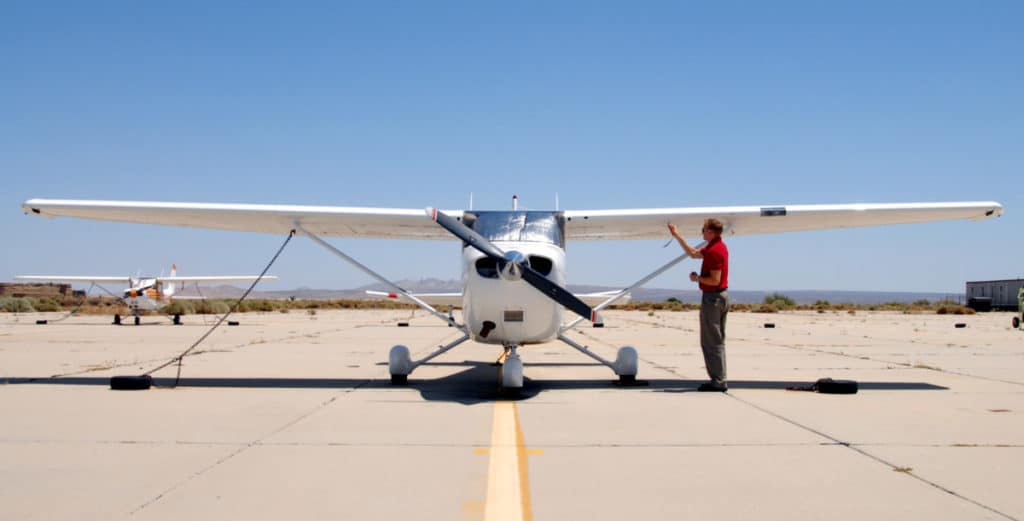
The main reason why these kinds of pilots stop using the checklists is that the lists are short and a ‘Flow’ around the cockpit and instrument panel will be developed by the pilot, similar to how you just get in your car and drive. After becoming familiar with it, you know what to do and when.
However, when a pilot is flying a complex aircraft and/or is mandated by the company, then the use of checklists will become part of the job. I have flown in aircraft with and without mandatory checklists and for complex aircraft, when flying with different pilots sitting next to you, I can tell you that checklists work great.

Join My Newsletter & Get Great Tips, Information and Experiences To Help You Become a Superb Pilot!
Types of Aircraft Checklists
There are many different types of checklists used in the aircraft by the pilot for varying reasons. These are the three most common checklists:
- Aircraft Configuration – These will be used to get the aircraft set up for company-specific operations. Items can include company radio frequencies, completing company pre-flight preparations, Fueling requirements, etc.
- Normal Procedures – These are the lists that set the aircraft configurations for each phase of flight. They will be developed by the manufacturer and sometimes companies can add their own items to the lists. They are checks like Before Takeoff Checks or After Landing Checks.
- Emergency Procedures – When an emergency occurs, the manufacturer will have developed a procedure on how to deal with it and make the aircraft safe. Engine fires, smoke in the cockpit, and rapid depressurization are some examples.
Each of these checklists can then be broken down into two specific types:
- Challenge & Response List – Used in Two-Pilot Operations. One pilot will read out the item, and the second pilot (Usually the flying pilot) will complete the task and give a response like ‘Check, Set, or Secured’ for example.
These items will be the most important and require the utmost concentration and attention by both pilots. For example, before shutting down a faulty engine, both pilots need to ensure the right engine is about to be shut down! - Read & Do List – Used for the less critical items on a flight phase. The list can be read and completed by the non-flying pilot without the interaction of the flying pilot. After-landing checks can be typical of this. Raising the flaps, turning off the landing light, turning off the transponder for example. These are not critical to flight safety but need to be accomplished.
The way these checklists are presented to the pilot can also have differing ways:
- Aircraft Flight Manual – Following the checklist directly from the pages of the aircraft flight manual is the most guaranteed way to ensure the checklist is correct. Flight manuals however are big and bulky and trying to use them in a small aircraft or helicopter makes them near impossible.
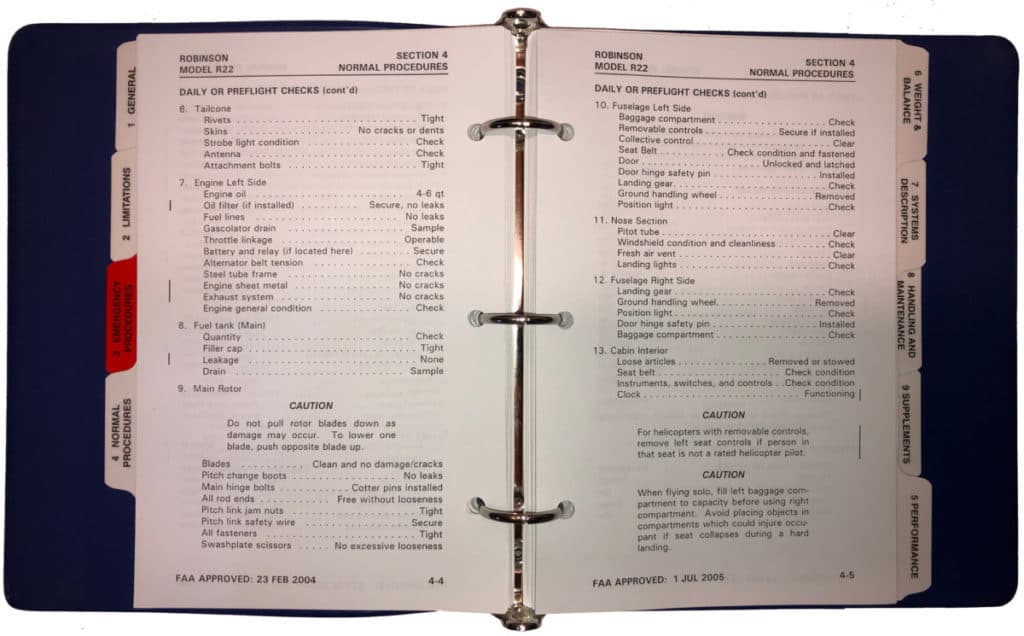
- Company Checklist – Most companies will produce their own approved aircraft checklists based on the aircraft flight manual with their own company-specific items added. A small, company-branded, wire-bound booklet is a common feature in most commercial aircraft.
- Laminated Checklist – By far the most common checklist you will find in the aircraft. Simple aircraft can have a double-sided card with multiple checklists on it, whereas the larger more complex aircraft can have the wire-bound booklet mentioned above laminated for durability.
The QRH or Quick Reference Handbook for the Leonardo AW139 helicopter is a laminated, wire-bound, double-sided guide containing tabbed checklists, limitations, and general aircraft information that is 248 pages thick! - Digital Checklist – With the advent of the iPad and other tablets the ‘Electronic Flightbag’ is working its way into the industry by providing pilots with all the checklists, procedures, policies, and manuals in a digital pdf-style format right at their fingertips.
Some modern aircraft have digital checklists on touch screens built into the cockpit requiring the pilot/s to press each item as it is completed. This is then recorded to be viewed in the event of an accident or company investigation.
When Do Aircraft Checklists Get Used?
Now we have discussed that checklists can be used for most stages of flight, let’s look at some of the typical moments when a pilot would pull out the checklist during a flight:
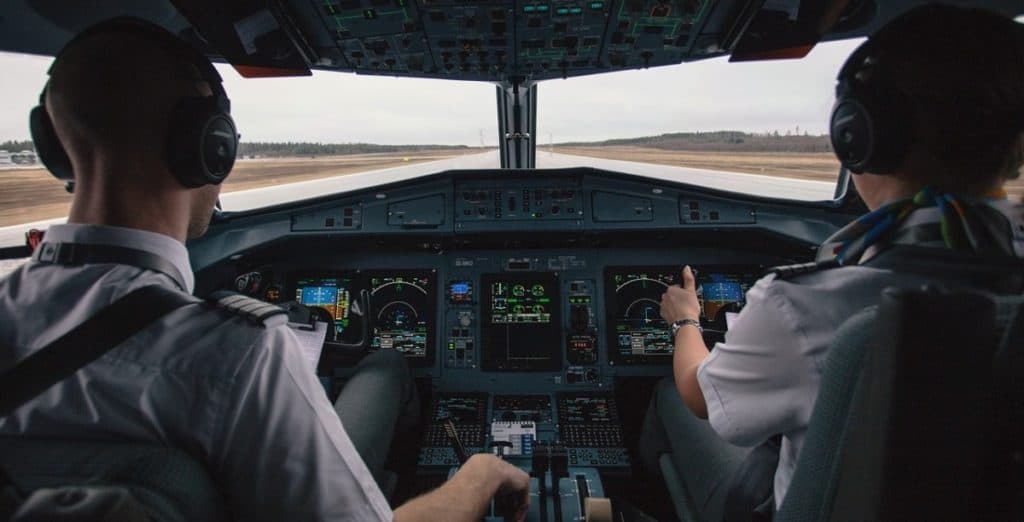
Preflight Checks
Used to get the aircraft uncovered and ready for its next flight. Visual inspections, fuel onboarding, tie-downs, and covers are all removed or prepared during this stage. Once the pilots are inside the cockpit the aircraft will start to be configured including setting up the navigation and radio systems etc.
Before Engine/s Start Checks
Getting ready for starting the first engine. Ensuring battery/APU voltages are good, fuel quantity, and pressures are good. Doors are closed and locked and the area around the aircraft is clear of personnel, vehicles, and obstructions. This is especially important when starting a helicopter!
Before Taxi Checks
Permission to move the aircraft, ensuring all cables, hoses, or air-to-ground intercom systems are disconnected and free. Ensuring the route to taxi around the airport is known and set. Aircraft heating and cooling systems are set, all passengers are secure and the aircraft brakes are released are just some examples.
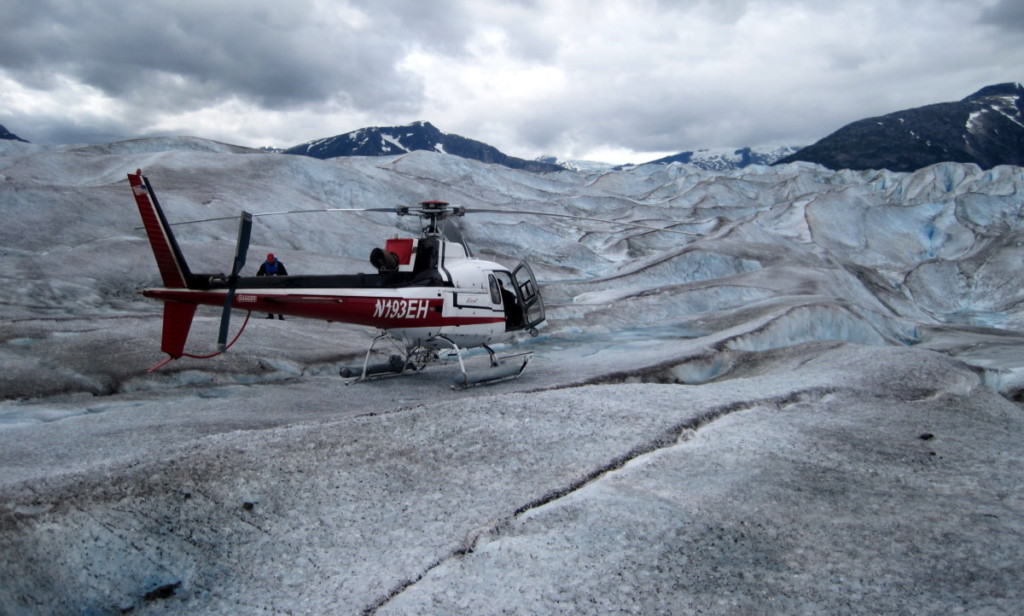
Before Takeoff Checks
This is when the aircraft needs to be configured for takeoff. Flaps set, engine power set, climb heading & altitude set, and departure procedure loaded into the GPS. In the case of helicopters, Rotor RPM is full, the area is clear, and permission to takeoff has been requested from Air Traffic Control.
After Takeoff Checks
Once airborne wheels come up, the heading is set, flaps retracted, and climb power is set.
Cruise Checks
Once at the top of the climb, the aircraft is ready to be configured for cruise flight. Cruise power and airspeeds are selected, seat belt signs can come off and the navigation equipment can be checked to ensure it follows the flight-planned route.
Descent Checks
Once the aircraft is ready to begin descending, the pilots get ready for the approach procedure they will be flying into the airport. Passenger briefing, descent power, and descent altitudes are all configured at this point.
Approach Checks
When flying into a busy airport the approach procedure being used by all inbound aircraft will be set up and configured by the pilots. A pilot briefing with one another will discuss the details of the approach procedure and also what they plan to do if the airplane needs to make a second attempt if the ceiling is too low for example.
Landing Checks
Landing gear down, brakes released, and flap positions are set ready for landing the aircraft. For helicopters, this can be confirming the spot or helipad the aircraft will land at. Final passenger and crew briefing and last aircraft security checks before touching down.
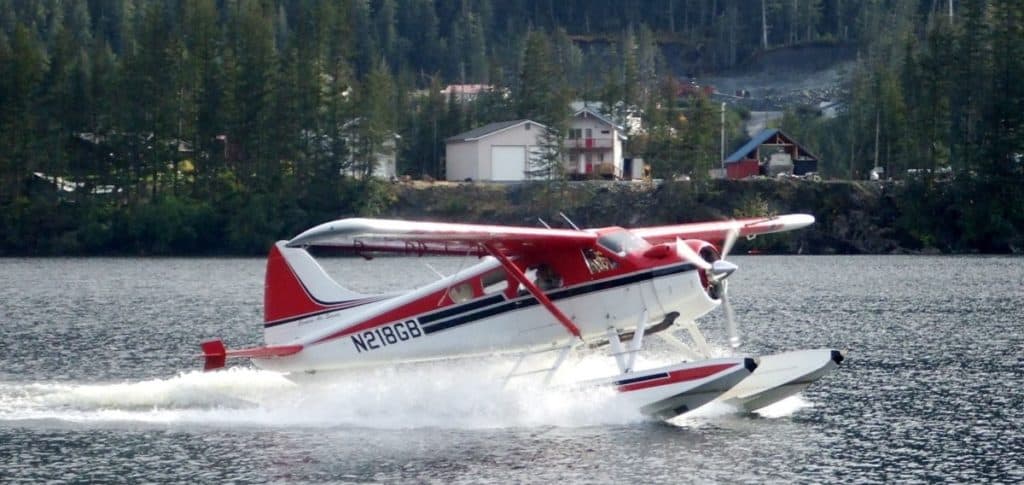
After Landing Checks
Flaps to be returned to their stowed position, landing lights off, transponder off, and routing to the gate are all set.
Shutdown Checks
The aircraft is in its final parking position and the engines can be cooled down if required and then shut down, hydraulic and fuel pumps shut down, exterior lighting turned off and the aircraft is prepared for passenger offloading.
Securing Checks
If the aircraft is to be left for any amount of time then this is when all the systems are shut down properly and aircraft covers and ties downs are installed.
To Finish
All aircraft are provided with checklists to help keep the aircraft configured properly for each phase of flight. Humans cause over 80% of aircraft accidents and following checklists are a great way of reducing simple errors turning into catastrophic accidents.
The larger the aircraft, the more detailed the checklists can become but with practice and good Crew Resource Management training, two pilots who have never met before can easily climb into the cockpit together and fly the aircraft safely and efficiently with ease. Without checklists, this may be a different matter!
Further Reading
If you found this article interesting and would like to keep reading, I highly recommend the following articles from my blog:

